
Even Breathing Is A Risk In One Of Orlando’s Poorest Neighborhoods
ORLANDO, Fla. ― During the 15 years that Jacqueline Young lived in Griffin Park, a federal housing project, she always worried about the air that she and her granddaughter were breathing.
On bad days, her throat would hurt, and her granddaughter would have violent asthma attacks. Young, who often walked neighborhood kids to and from school, noticed that many of the children wore masks to protect themselves from pollution.
The air inside wasn’t much better. The decrepit air-conditioning unit in Young’s apartment spewed out dust and forced her to keep the windows open, even when traffic was heavy. Sometimes, soot and particles floated through the air inside her apartment “like it was snowing dust,” said Young. “We could never not think of the air we were breathing,” she said.
She finally moved out last year, a refugee from the air itself.
Griffin Park is surrounded by two major highways that are used by hundreds of thousands of cars heading in and out of Orlando, Florida, every day. Whatever trees once buffered the noxious fumes and the roar of cars on all sides have been cut down. From above, you see a grid of apartment buildings encircled menacingly within a loop of the interchange, as if inside a noose.
The pollution in Griffin Park and its low-income Parramore neighborhood is violence of a kind Americans tend to ignore. But it is as deliberate and as politically determined as any more recognizable act of racial violence. What happened to Griffin Park was the sum of a series of choices made over the course of a century, the effect of which was to transmute formal segregation into the very air certain people breathe.
Although air pollution has generally decreased in the United States since the passage of the Clean Air Act of 1970, it still causes 200,000 early deaths each year. Men, poor people and African-Americans are disproportionately at risk. According to a comprehensive Harvard University study last year of air pollution in the U.S., black people are about three times more likely to die from exposure to airborne pollutants than others.
The study also concluded that many of these deaths could be prevented if the federally mandated air quality standards were tightened. Reducing current levels of so-called fine particulate matter by just one microgram per cubic meter of air would save about 12,000 lives every year, the scientists found.
But rather than making environmental standards more stringent, the Trump administration is moving to scrap a number of regulations and has proposed cutting the Environmental Protection Agency budget by almost one-third. The administration also collected 60 percent less in civil penalties from polluters through July 31, 2017, than any of the previous three administrations had collected during a similar time frame, according to the Environmental Integrity Project.
“They are not following science in the way they should,” said Francesca Dominici, a professor of biostatistics at the Harvard T.H. Chan School of Public Health, in reference to the Trump administration. “They’re going in the opposite direction.”
The Harvard study didn’t look into why black people might be more vulnerable to fine particulate matter. Dominici, the lead scientist, said other research suggests that less access to health care and higher rates of health problems in general can increase the mortality rates within communities of color.
But the potential culprit isn’t hard to identify. Last year, a federally funded study found that people of color were exposed to more transportation-related pollution than white people. While the study itself didn’t identify the underlying causes, the senior author pointed to racial residential patterns, whereby low-income black people are more likely than whites to live near sources of pollution such as highways.
Segregation persists, entrenched through housing and zoning policy and through the construction of urban expressways that literally turned existing racial borders to concrete. This was not an unintended consequence; this was the whole point. As highway lobbyist Alfred Johnson later told an interviewer, some city officials in the mid-1950s were blunt about the goals of highway planning: “Urban Interstates would give them a good opportunity to get rid of the local ‘niggertown.’”
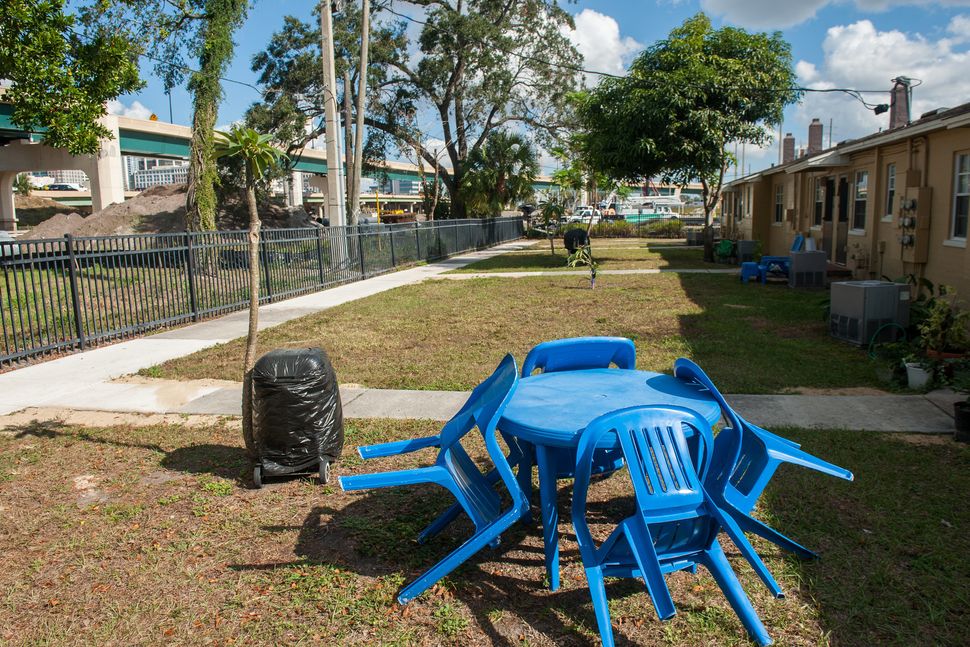
Founded in the early 1880s, Parramore was once a bustling middle-class community full of black-owned homes, schools, businesses, churches and hotels. And it thrived well into the mid-20th century ― even as black people were violently blocked from political power in Orlando and elsewhere in the country.
Following Reconstruction, railroad systems were built around black neighborhoods across the country as a means of segregation. The railroad tracks divided Orlando into a black westside, including Parramore, and a predominantly white eastern corridor.
In 1938, the city demolished housing in Jonestown, the first black neighborhood in Orlando, and two years later relocated a majority of the residents to the new Griffin Park project. When Interstate 4 was constructed almost two decades after that, it followed the route of the railroad tracks and further severed the Parramore community from the rest of the city, while exposing the former’s black residents to even higher levels of pollution.
Today, I-4, State Road 408 and various ramps form the loop that encapsulates Griffin Park within an “oval of pollution,” said Robert Cassanello, a history professor at the University of Central Florida. “The developments, and the plans to revitalize the city, were at the cost and risk of African-American residents.”
The child poverty rate in Parramore is 73 percent and the median annual household income is $13,613. Many lots are vacant and overgrown, and most of the existing housing is considered substandard by today’s construction standards, according to a city assessment.

“If I had money, I’d live in another place,” said Marita Wilson, whose apartment in Griffin Park is often covered with a thin layer of dust when she wakes up in the morning. The 70-year-old woman is often troubled by asthma and severe allergies, which she believes are exacerbated by the fumes and the dust from the traffic right outside her windows.
People in Griffin Park and the wider community of Parramore say they have tried in vain to get officials to focus on the air pollution and other environmental problems they fear are creating health problems for residents.
“Too many people I know have cancer. Too many people I know have respiratory problems. Too many people I know don’t have the proper information to know how to diagnosis what’s going on,” said Lawanna Gelzer, a community activist. “I get upset a lot. I’m David and I have a slingshot and a rock. And Goliath is my government, my elected officials, with billions of dollars to fight me.”
City officials say they are working on conducting a health assessment of the community sometime in the next five years as part of a beautification project in the area. The plan aims to “transform” Parramore into one of the healthiest neighborhoods in the city and to make following a healthy lifestyle simpler by building a Parramore farmers market, community gardens and a bike path.
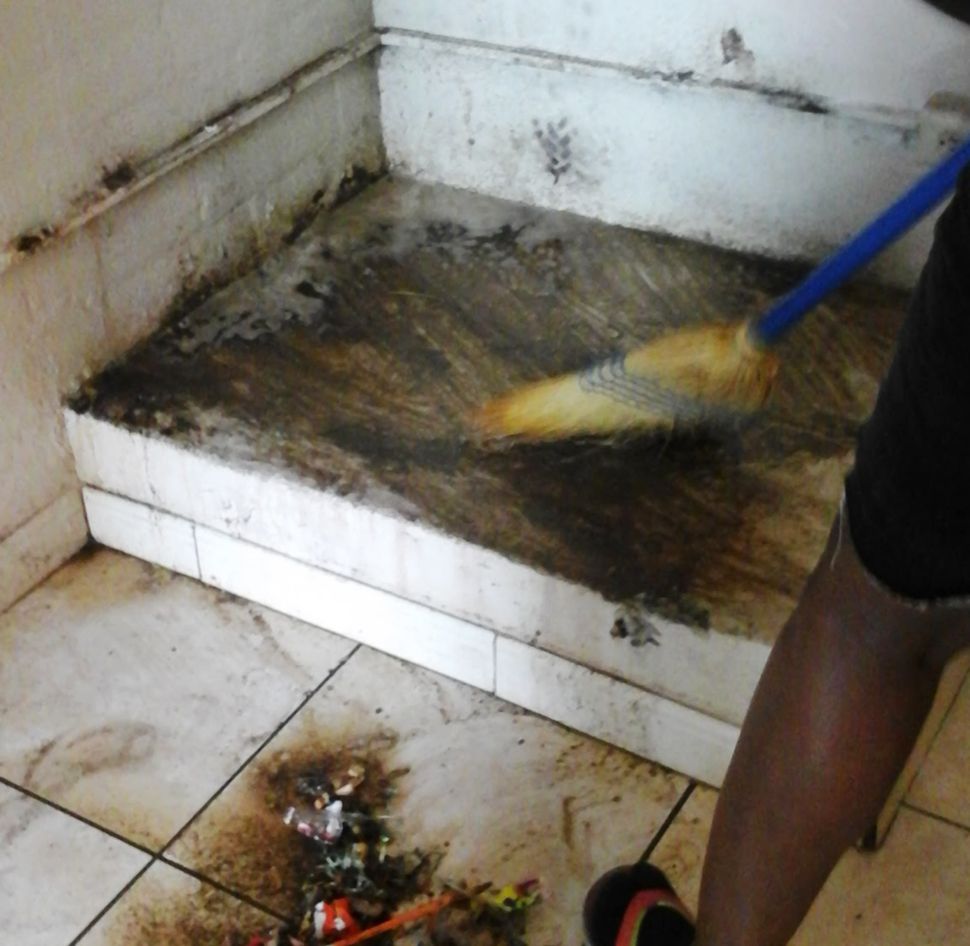
Jacqueline Young is a U.S. Air Force veteran whose granddaughter Lynette lived with her for years. She believes Lynette’s asthma and severe allergies were worsened by the neighborhood’s poor air quality. Lynette used nebulizers to ward off attacks that were sometimes so severe the girl had to be hospitalized to have air pumped into her lungs. Doctors couldn’t explain why Lynette’s asthma was getting worse, Young said.
Many adults living in Griffin Park suffered from asthma and other respiratory problems as well, she said. The paramedics maintained a presence at the public housing complex. “Not for shootings but for health issues,” said Young. “There’s always somebody in the ambulance.”
A 2016 assessment by the state Department of Health’s Orange County office found that carbon dioxide levels inside Young’s apartment were more than three times higher than those measured outside the apartment, falling into the EPA range of “unhealthy for sensitive groups” ― such as children, the elderly and asthmatics like Lynette.
The assessment also found “an excessive amount of dust in the A/C return area.” Young was advised by the Health Department to open her windows and clean her apartment. But she said the Orlando Housing Authority gave her the opposite advice, warning her against keeping the windows open.
Young, whose fight with the housing authority was covered locally, said it took eight years for her A/C unit to be fully operable following its installation in 2007. A spokeswoman for the housing authority said it tried to address Young’s claims by fixing the A/C unit each time Young put in a request ― at least 17 in all between 2011 and 2017, according to agency documents. The housing authority said that, on average, those repairs were taken care of within a week.
Emails to officials show Young seeking answers from various officials about the dust in her home — from the Florida Department of Transportation, from the Orange County Environmental Protection Division, from the Florida Asthma Coalition, from the Orlando Housing Authority. The responses, if they came at all, were unhelpful.
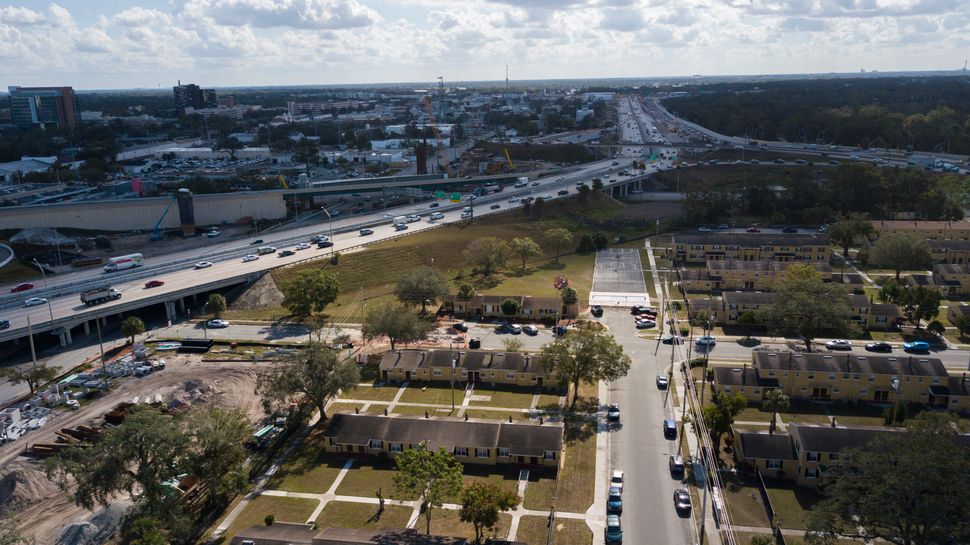
While indoor air pollution is considered a serious health threat, residents in Parramore also worry about the air quality outside.
The Health Department’s Orange County office tested the air quality in three separate outdoor locations in Parramore in 2014 and didn’t find elevated pollution levels. The researchers suggested that further testing be done since wind and other factors can produce unreliable results. But no additional outdoor study has been conducted since then because the office only conducts air quality tests upon request.
Doug Brugge, a professor of public health and community medicine at Tufts University who studies the connection between traffic and health issues, criticized that 2014 assessment. Griffin Park is unique in that the highways wrap completely around it, Brugge said. “That really stands out.”
The study also “missed the point about traffic pollution,” he said. It didn’t measure the most relevant form of such pollution – the ultrafine particles and black carbon that are often present in the air near major roadways.
“It’s very frustrating how often we see people doing the wrong measurements near the highway,” Brugge said, adding that research shows that living near major roadways is associated with cardiovascular, respiratory and neurological effects.
When contacted for comment, Orlando city officials referred HuffPost’s air quality questions to the Health Department’s Orange County office, the state Transportation Department and the Orlando Housing Authority. The Health Department office declined to comment on Brugge’s criticism of the study and the dust issue in Griffin Park, but referred HuffPost to the Florida Department of Environmental Protection. The latter agency said that ozone and particulate matter levels in the area are within the “good” and “moderate” ranges of the EPA’s Air Quality Index. (The air monitor is about seven miles south of the housing project.)
The Orange County Environmental Protection Division measured the air quality at a site in Parramore for a year ― from July 1, 2016, through June 28, 2017 ― and found the ozone and particulate matter levels in that area to be within the “good” and “moderate” ranges of the Air Quality Index as well, according to a department spokesperson.
But the data, according to Brugge, don’t actually say anything about the air quality in Griffin Park. The measurements are based on a limited number of monitors, and while the EPA’s index is useful, Brugge said it is hardly definitive. The index doesn’t disclose which pollutants are driving the day’s air quality and it doesn’t take into consideration pollutants that are not part of the index. It’s not designed to assess near-highway environments, he said. And the EPA doesn’t include ultrafine particles, the most adverse for health, in its index because they’re not a federally regulated pollutant.
“Their air monitor seven miles away does not tell you that there are no problems at that housing development,” said Brugge. “I’m a scientist. I always qualify things. But that’s an unambiguous point.”
Orlando plans to do its own health disparity study as part of the beautification project known as the Parramore Comprehensive Neighborhood Plan. “As a short-term recommendation the goal is to begin this assessment within 5 years. Staff is currently in the early stages pursuing funding opportunities,” the city said in a statement to HuffPost.
But existing data already suggest that, in an area considered medically underserved, 41 percent of children suffer from chronic health issues. And residents say they don’t need to wait up to five years to know there’s a problem.
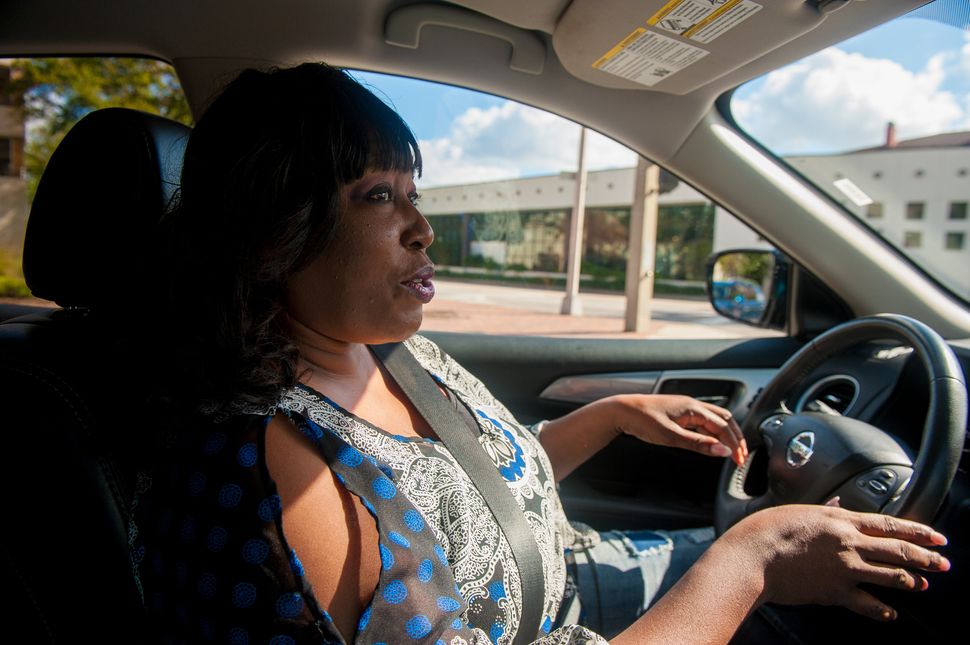
Gelzer, the environmental justice activist, has been sounding the alarm about air quality for years. She organizes rallies, attends city council meetings and tries to help people in the community by giving them the information they need.
The 55-year-old, who operates a daycare center with her mother, does what she can to protect those kids, many of whom suffer from asthma and other severe respiratory problems. Some days, she keeps the children inside because she is concerned about the levels of air pollution. But that’s just a small bandage on a huge problem.
Gelzer first became aware of serious pollution in the neighborhood in 2013 when she learned about a Superfund site, the former Orlando Gasification Plant. She suspected that this, along with the exhaust from the cars on the freeway, was making her community’s respiratory and other health issues worse.
Remediation at the Superfund site is scheduled to begin in the first quarter of this year, a city spokesperson told HuffPost. (TECO Peoples Gas, a natural gas provider that now occupies the site, is not one of the companies currently tasked with cleaning it up.) But the old gasification plant isn’t the neighborhood’s only trouble spot. There are at least 454 contaminated lots in Parramore, according to a 2013 EPA grant application from the city of Orlando seeking clean-up funds.
When Gelzer reached out to the city to learn about pollution in Parramore that year, she was given a black-and-white map from the grant application. She thinks the people in the community need more detailed information than that.
“How would I be able to determine what health issues I should be dealing with based on this map?” Gelzer said. “We’ve been assured that we’re not at risk, but who’s assuring us? The same people who allowed this to happen to our community.”

As Gelzer has found, pollution in Parramore is a political matter just as surely as it is an environmental one.
In 2015, Latoya Lee and her family moved from their home beside Gelzer’s daycare center to a small house on Robinson Street, about a mile north of Griffin Park and right next to the neighborhood’s Superfund site, where lethal chemicals such as benzene, naphthalene, coal tar and polycyclic aromatic hydrocarbons had leaked into the ground.
People who live near the former gasification plant have long been concerned about respiratory problems like asthma as well as other health risks associated with the exposed dust, vapors and smells that may spread during the Superfund clean-up process.
The Lees were certainly worried. A 2016 public health assessment from the Health Department had concluded that current contaminants were likely below harmful levels, but still the couple was skeptical.
Latoya had been in and out of the hospital since 2012 for issues related to troubled breathing, but her health quickly worsened in their new home. Her bronchial asthma and sleep apnea got worse. She had three major surgeries due to her longstanding respiratory problems ― two of them tracheostomies.
Sometimes, waking up in the morning, she couldn’t breathe or even walk the short distance to the bathroom. She was using the inhaler more and taking more medication. “I’m to the point where I’m using more oxygen than I did before,” she said, during an interview in November. She was sitting on her porch wearing a pink turban, flanked by her oxygen tank. “It wasn’t as bad when we were two or three blocks over.”
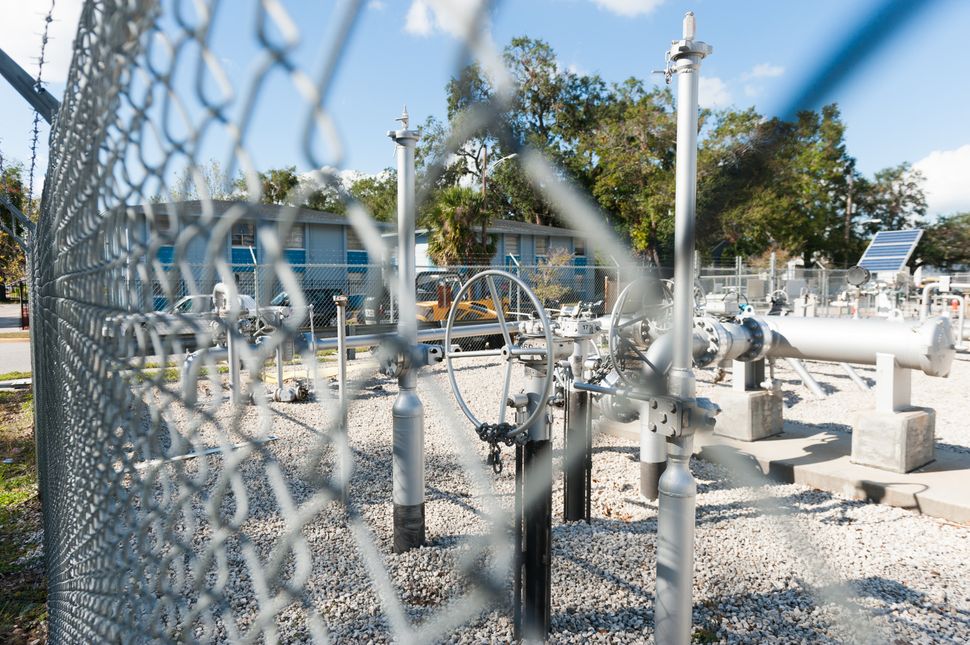
Allen, her husband, believed that the air quality was worse in the new location and decided to move his family into a subdivision about 20 minutes away from Robinson Street. “I’ve been in there and just sat in there. I could breathe fine,” Latoya said. “I’m not short of breath, none of that. And I’ve actually noticed that the last two times that I’ve left here and gone to the new house, so it’s a lot going on with the air around here. It’s a lot.”
But on Dec. 6, as the Lees were moving into their new home and their children were getting dressed for school, Allen woke up to his daughter screaming that her mother had stopped breathing. Latoya had died from cardiac arrest.
Gelzer fears her friend is not “the only one who has passed because of this.”
“The most vulnerable part of our population is dealing with something that’s hazardous to their health,” she said. “When you look at the people ― a community of color ― and you look at the economics of the community, and how people are treated, I just don’t think this would happen anywhere else.”
The state Transportation Department is now expanding I-4 further west into the neighborhood.
